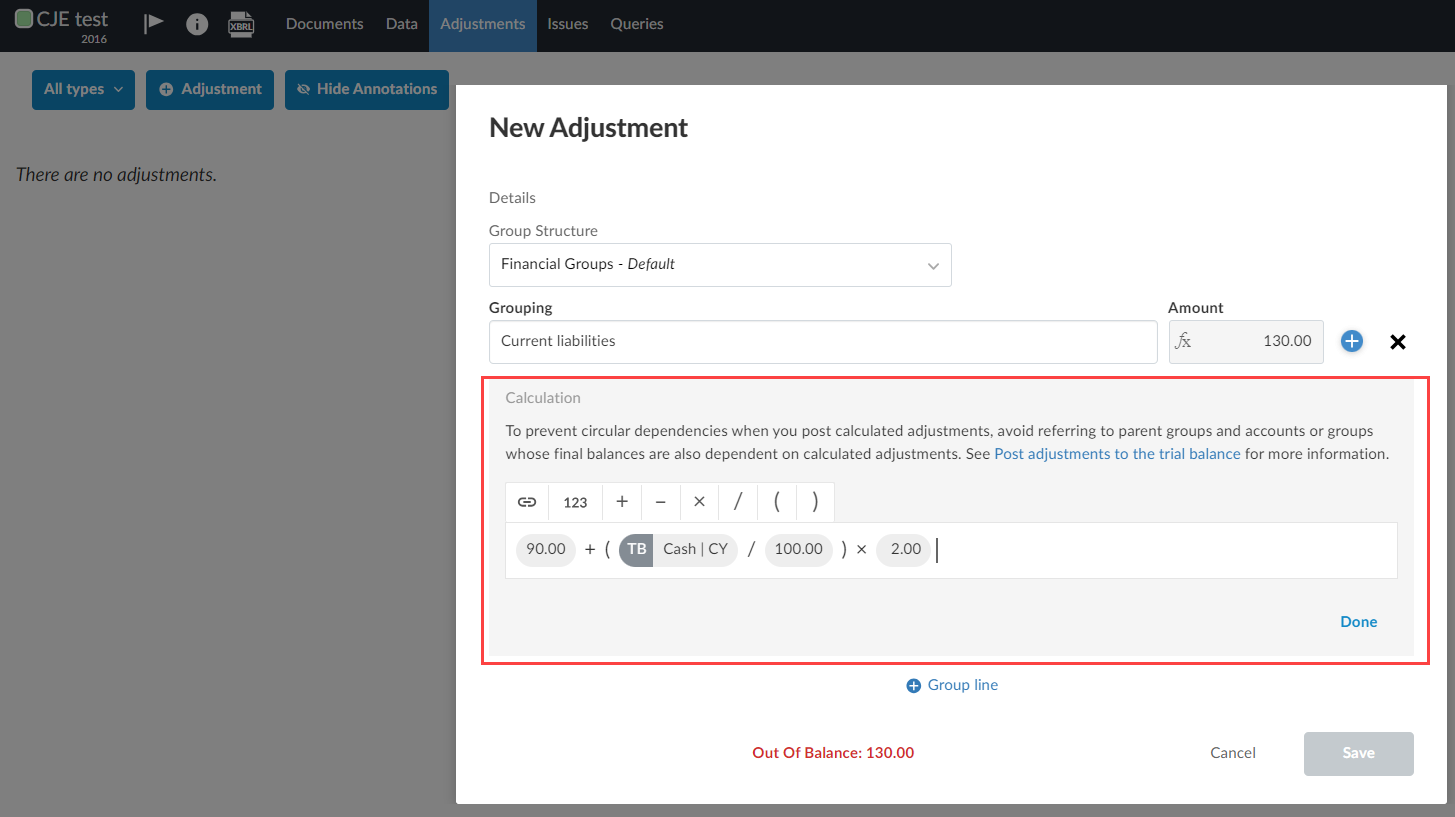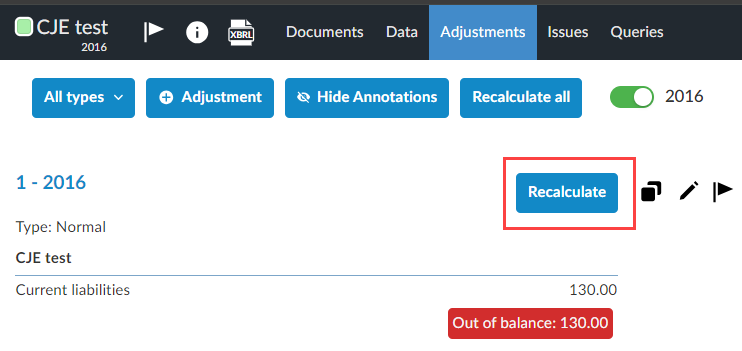What's new in Caseware Cloud Engagements 2024-08
Welcome to the Caseware Cloud Engagements 2024-08 release! This release introduces calculated adjustments and the ability to search for financial groups in the Data page.
To learn more about the Caseware Cloud Engagements platform, see What is Caseware Cloud Engagements?
Calculated adjustments
You now have the ability to create calculated adjustments. When you add an account or group line to an adjustment, you now have the option to select fx in the Amount field and create a calculation to determine the adjustment amount.

Similarly to custom calculations in dynamic tables, you can reference trial balance data in the calculation. If the value of the referenced trial balance account or group is changed, a Recalculate button appears for the adjustment on the Adjustments page. You can select this button to recalculate and update the adjustment amount.
If more than one adjustment requires recalculation, you can also select the Recalculate all button at the top of the page to recalculate all adjustments at once.

Search for financial groups on the Data page
To allow you to more easily find financial groups, a search option is now available on the Financial groups tabs on the Data page.

Fixes in SE 2024-08
The following list features a brief description of bugs that have been resolved in SE 2024-08.
-
In the financial statements, you are unable to add notes from the notes library.
-
In the financial statements, you are unable to scroll through the Document Map if there are a large number of notes.
-
When you open a linked Excel file, the engagement freezes.
-
A technical issue related to printing.
-
The Add icon is visible in the top menu for firm authors, although no items that can be added from the Add dialog are available in the template.
-
In checklists, an error occurs when you deselect your response for a picklist and immediately pick another response.
-
When you select the Download reference copy option, some query comments are not included in the generated PDF.
-
When you are importing the trial balance from another engagement, you are able to search for engagements in other entities while you have the Sync trial balance option turned on, although syncing the trial balance is only available for engagements in the same entity.
-
An error occurs when you attempt to add a new area while adding a risk.
-
When a product template is updated to enable signoffs for risks and assign non-default signoff schemes, the signoff schemes are not applied correctly in carried forward engagements if
-
The prior year engagement was created before the product template was updated.
-
The carried forward engagement was created after the product template was updated.
-
-
When you attempt to add a new section at the top of a financial statements area, the section is added to the bottom of the area instead.
-
A technical improvement related to contact placeholders.
-
In the financial statements, area and notes headings do not display.
-
You cannot edit text fields in documents.
-
When you import a planning balance, the date for the CY - Planning column does not display on the Data page unless you refresh the page.
-
Some documents do not display any content.

